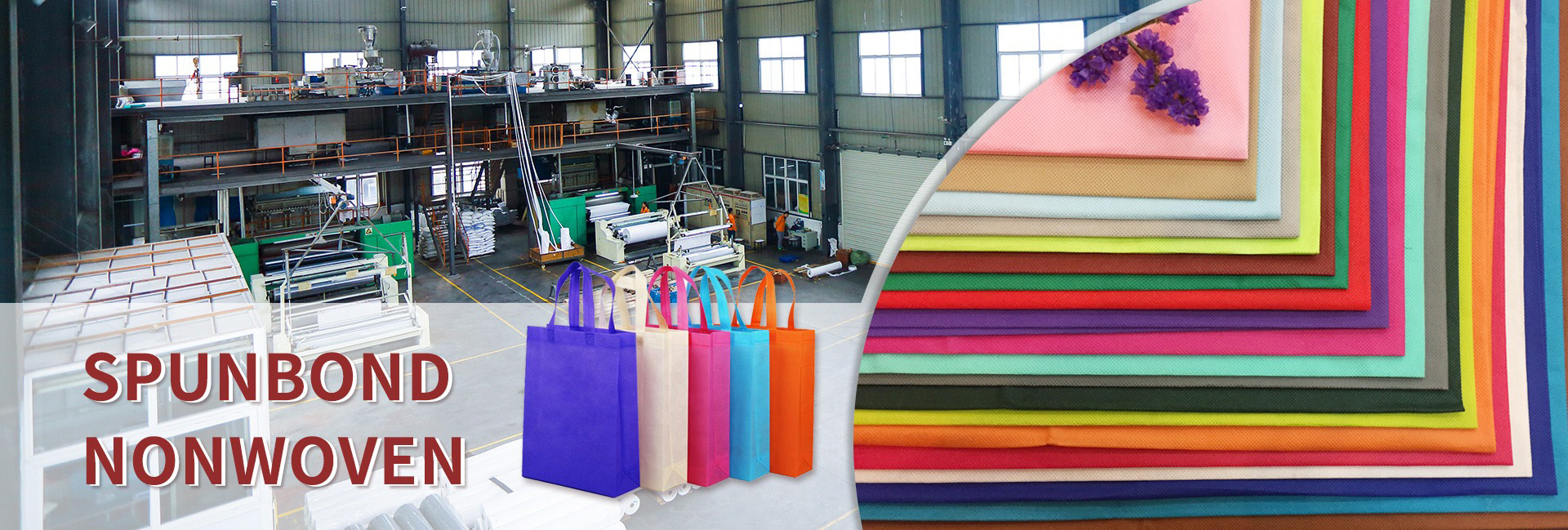There are many types of non-woven fabrics, and spunbond non-woven fabric is one of them. The main materials of spunbond non-woven fabric are polyester and polypropylene, with high strength and good high-temperature resistance. Below, the non-woven fabric exhibition will introduce to you what is spunbond non woven fabric? what is spunbond material? Let’s take a look together.
What is spunbond method
The important reason for its rapid development is that it uses synthetic polymers as raw materials. This method utilizes the principle of chemical fiber spinning to continuously filament during the polymer spinning process, which is then sprayed into a web and directly bonded to produce non-woven fabrics. The manufacturing method is very simple and fast. Compared with dry non-woven fabric processing technology, it eliminates a series of tedious intermediate processes such as fiber curling, cutting, packaging, transportation, mixing, and combing The most significant effect of mass production is to make spunbond products have high strength, low cost, and stable quality. The stretching of spunbond method is the core technical problem for obtaining fine denier fibers and high-strength nonwoven materials, and currently the main method is air flow stretching technology. In order to further improve the airflow draft of spunbond fibers, high efficiency extrusion of single hole spinning, design of high-density spinneret holes, and their impact on the production and quality of non-woven materials, we are studying the design of a draft channel combining positive pressure and negative pressure, as well as the impact of electrostatic spinning on spinning speed, web width, web uniformity, and fiber fineness. This is a special type of spunbond equipment designed for industrialization, One of the key tasks of parallel two-component spunbond equipment.
what is spunbond material
The raw materials for spunbond non-woven fabrics mainly include cellulose fibers and synthetic fibers, which are made through the spunbond process. It has good hand feel, breathability, and wear resistance, and is widely used in various fields. The manufacturing process of spunbond non-woven fabric is simple, cost-effective, and has broad market prospects. It is hoped that there will be more innovation and development in the future, so that spunbond non-woven fabric can play a greater role in various fields.
Cellulose fiber
Cellulose fiber is one of the important raw materials for manufacturing spunbond non-woven fabrics. Cellulose is a natural organic compound widely present in plant cell walls. Many plant fibers, such as cotton, linen, hemp, etc., contain abundant cellulose. These plants undergo a series of processing treatments, such as peeling, defatting, and boiling, to extract cellulose from the plants. Then, through the spunbond process, the cellulose fibers are stretched and oriented to form a spunbond non-woven fabric. Cellulose fibers have good softness and breathability, making spunbond non-woven fabrics have good hand feel and breathability.
Synthetic fibers
Synthetic fibers are another commonly used raw material for spunbond non-woven fabrics. Synthetic fibers are fibers made by artificial synthesis or chemical modification, such as polyester fibers, nylon fibers, etc. Synthetic fibers have excellent physical properties and chemical stability, and the characteristics of the fibers can be adjusted as needed. In the manufacturing process of spunbond non-woven fabrics, synthetic fibers are usually mixed with cellulose fibers to improve the strength and wear resistance of spunbond non-woven fabrics.
What is spunbond non-woven fabric?
Spunbonded non-woven fabric, mainly made of polyester and polypropylene, has high strength and good high-temperature resistance. Spunbonded non-woven fabric extrudes and stretches polymers to form continuous filaments, which are then laid into a web. The web is then self bonded, thermally bonded, chemically bonded, or mechanically reinforced to transform into non-woven fabric.
Selection of raw materials
The raw materials used in the production line are related to the market positioning and purpose of the product. When producing low-end market products, due to the low requirements for raw materials, in order to reduce production costs, lower quality raw materials can be selected. The opposite is also true.
Most spunbond nonwoven production lines use granular polypropylene (PP) chips as raw materials, but there are also quite a few small production lines that use powdered PP raw materials, and some production lines that use recycled polypropylene raw materials. In addition to granular raw materials, melt blown nonwoven production lines may also use spherical raw materials.
The price of slicing is directly related to the size of its MFI value, generally the larger the MFl value, the higher the price. Therefore, it is necessary to comprehensively consider the production process, equipment characteristics, product usage, product sales price, production cost, and other factors to choose the raw materials to be used.
Post time: Feb-23-2024

